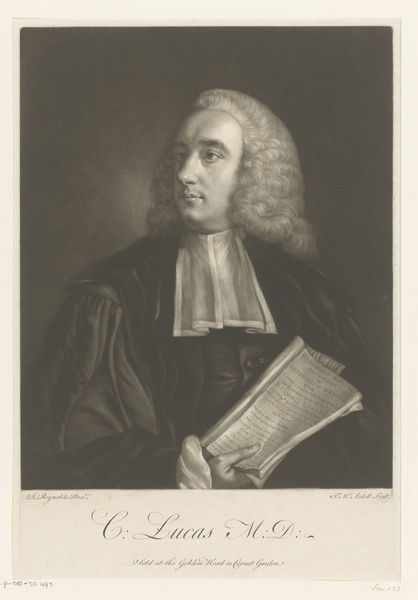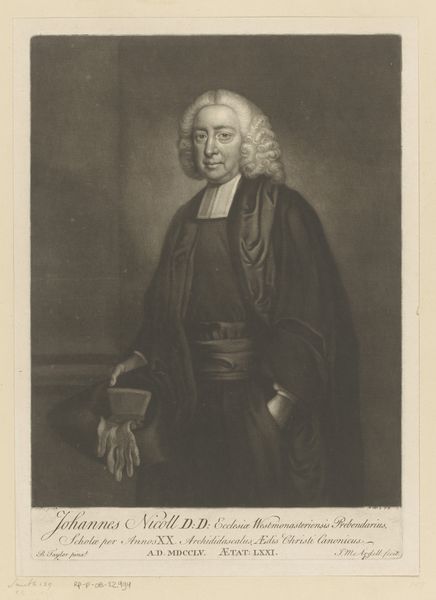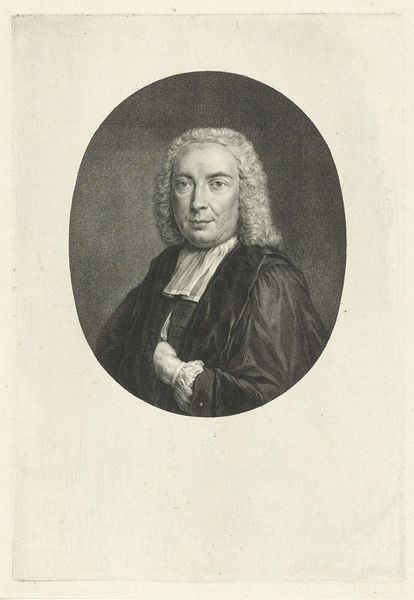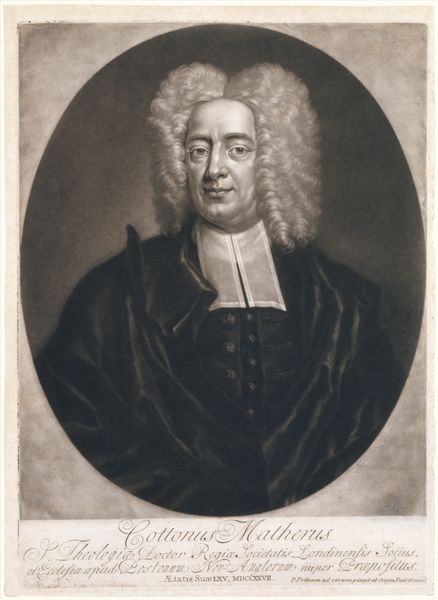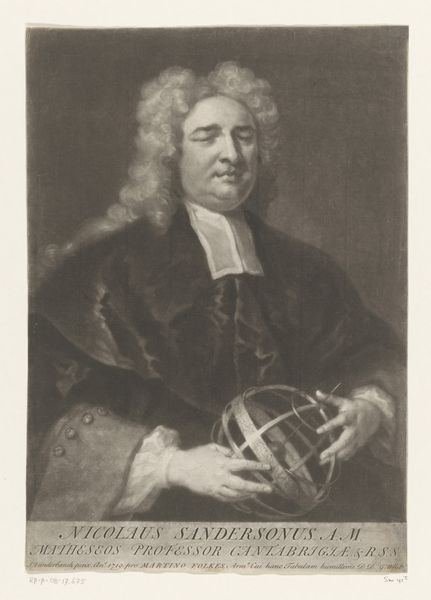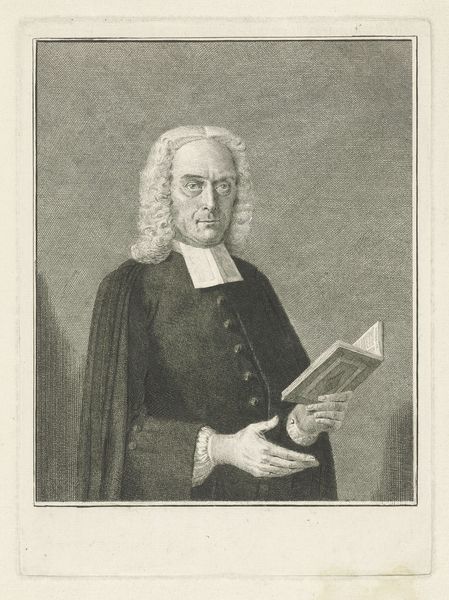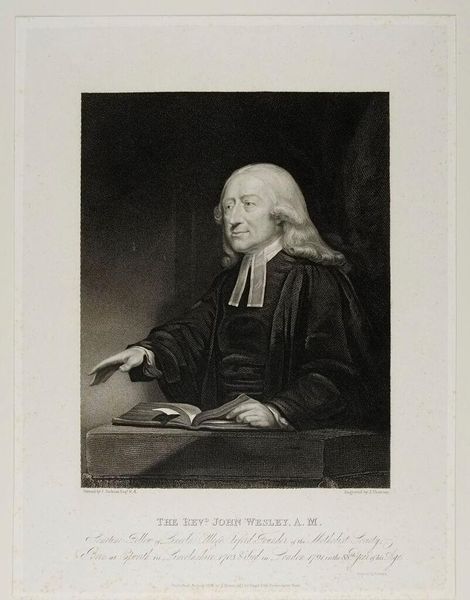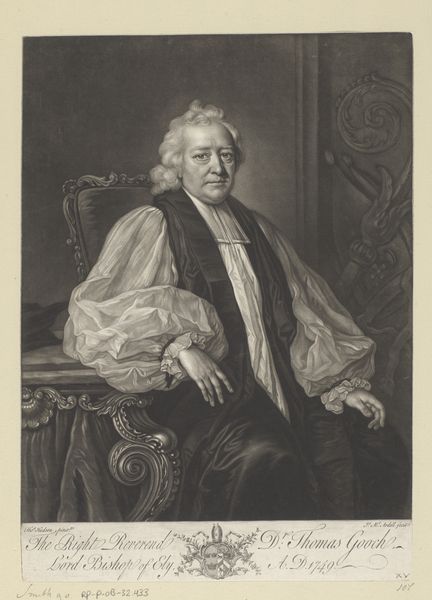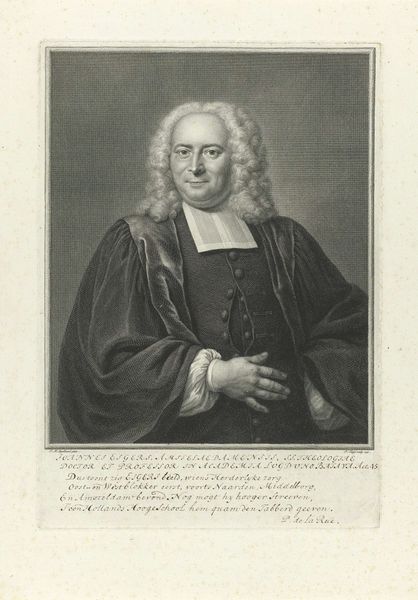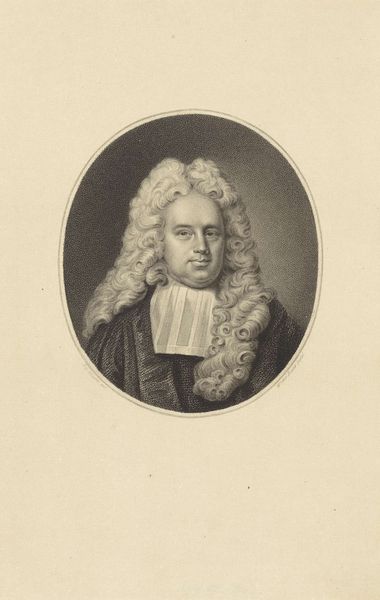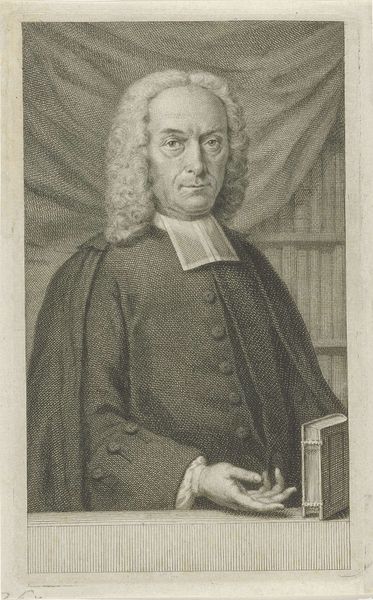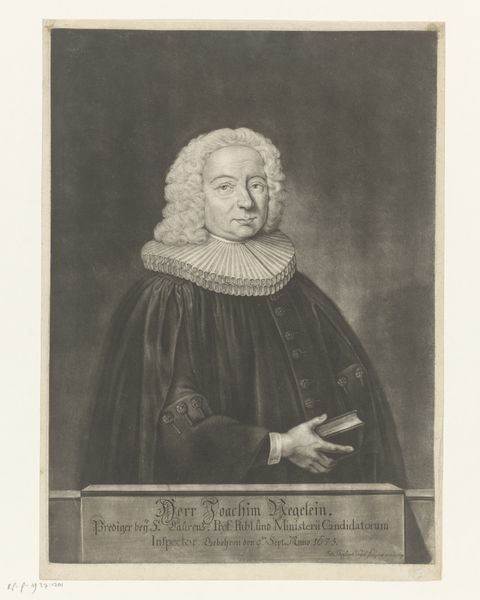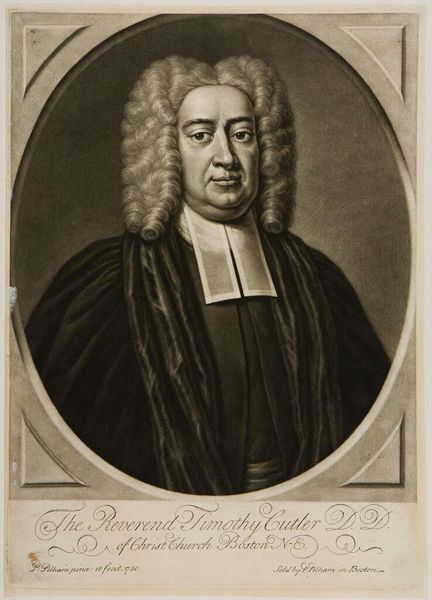
Dimensions: height 326 mm, width 235 mm
Copyright: Rijks Museum: Open Domain
Curator: Edward Fisher executed this print of William Markham sometime between 1759 and 1782. Editor: The composition feels very deliberate, almost staged, in the way it utilizes a monochromatic palette. It conveys a certain gravitas befitting the subject's apparent stature. Curator: Absolutely. Fisher’s background in academic art shines through. Note how the choice of rendering Markham's image through print rather than paint subtly democratizes his representation, making it accessible to a wider audience. It echoes a shift in the consumption of imagery and power during that era. Editor: And the book he holds reinforces this image of scholarly authority and moral fortitude. Its symbolism is almost blatant: Markham as a pillar of wisdom. There is power in printed text, right there in his hand. Curator: Precisely. Markham served as Archbishop of York during a turbulent period. Fisher was probably making an argument about the Archbishop's worthiness via printed portraiture. The portrait functions less as a likeness and more as a calculated endorsement for political stability. Editor: It’s interesting how even a seemingly straightforward portrait engages in its own form of public rhetoric. It gives us much to read between the lines about 18th-century hierarchies. Curator: Indeed. When examining prints such as these, we unveil the societal currents that defined both the patron and the artist during periods of political shift and image-making democratization. Editor: Analyzing artworks such as these prompts us to contemplate just how carefully images were constructed to perform specific symbolic and social roles. It gives new resonance to how we view people, especially men of power, through portraiture.
Comments
No comments
Be the first to comment and join the conversation on the ultimate creative platform.
